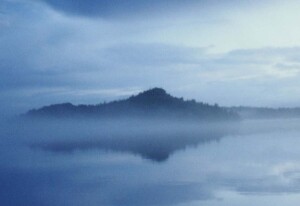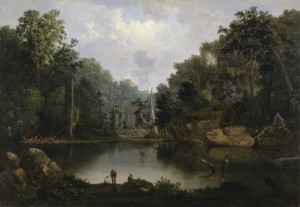- D-Day Ohio: D-DAY Conneaut 2012
Quickly becoming America’s premier living history event, this free to the public reenactment is a highly realistic and educational reenactment of the WWII European Theater of Operations and the D-Day Normandy invasion. | Since 1999, this re-creation of the events surrounding the allied landings on the coast of Normandy, France has thrilled thousands of spectators. The event occurs within the beautifully kept grounds of Conneaut Township Park, in Conneaut, Ohio. Hundreds of re-enactors from across the United States and Canada assemble on the 250 yard long beach and sloping adjacent terrain, which closely resemble Omaha Beach in Normandy, France. Other areas of the park provide secluded venues for recreations of inland skirmishes between the occupying German soldiers, French resistance fighters, and Allied parachute and Glider infantry.
- D-Day Ohio is nation’s biggest World War II re-enactment (photos) | cleveland.com
Flamethrower and mortar demonstrations will be part of America’s largest World War II re-enactment Friday and Saturday when D-Day Conneaut hits the shores of Lake Erie. | More than 1,500 military re-enactors are expected to participate in the two-day event, Aug. 21-22. It will include four mock battles and multiple small skirmishes in addition to the climactic re-enactment of the amphibious Normandy invasion of June 6, 1944.
The restaging in Conneaut is said to be the largest D-Day re-enactment in the world. | Acres of “living history” encampments re-create American, Canadian, British, French resistance and German field facilities. Other areas provide a period glimpse of “homefront” life in 1944. | Funded by donations and staffed by more than 300 volunteers from around the country, the event is free, including parking. About 30,000 people attended last year’s re-enactment at Conneaut Township Park. | On Thursday and Friday starting at 10 a.m., the public is invited to Conneaut Township Park to ride in a vintage landing craft. (A small donation is asked.) - Stephen Moss | The Guardian
Stephen Moss is a naturalist, writer and broadcaster, based at the BBC Natural History Unit. His latest book is Tweet of the Day (co-written with Brett Westwood). He writes the monthly Birdwatch column for The Guardian.
- Birdwatch: Green sandpiper | Environment | The Guardian 081615
Stephen Moss: “As naturalists and birders, we are constantly anticipating the coming season: always a new and unpredictable experience, full of hope and promise. That’s why I love visiting my local patch; for no matter how quiet it gets, something usually turns up – just like that green sandpiper.”
- The developmental dynamics of marmoset monkey vocal production | Science 081415
[Takahashi et al 2015] Anstract: Human vocal development occurs through two parallel interactive processes that transform infant cries into more mature vocalizations, such as cooing sounds and babbling. First, natural categories of sounds change as the vocal apparatus matures. Second, parental vocal feedback sensitizes infants to certain features of those sounds, and the sounds are modified accordingly. Paradoxically, our closest living ancestors, nonhuman primates, are thought to undergo few or no production-related acoustic changes during development, and any such changes are thought to be impervious to social feedback. Using early and dense sampling, quantitative tracking of acoustic changes, and biomechanical modeling, we showed that vocalizations in infant marmoset monkeys undergo dramatic changes that cannot be solely attributed to simple consequences of growth. Using parental interaction experiments, we found that contingent parental feedback influences the rate of vocal development. These findings overturn decades-old ideas about primate vocalizations and show that marmoset monkeys are a compelling model system for early vocal development in humans.
- Marmoset kids actually listen | Science 081415
[Margoliash et al 2015] full text open access | Undergraduate linguistics courses typically present language as unique to humans. Chomsky and others have postulated a language organ that evolved in hominids. This idea found modest support in the lack of evidence for vocal production learning (imitating sounds) in nonhuman primates. But did language suddenly emerge in the Homo lineage as a “hopeful monster” (1) who could learn new sounds and meanings? Evidence for vocal learning in nonhuman primates is now emerging (2, 3), and in hindsight, looking at vocal production learning as the sole evolutionary precursor of language might have been shortsighted. Similar developmental processes can lead to different end points, and minor modifications of a primitive developmental program can create very different creatures. On page 734 of this issue, Takahashi et al. (4) provide evidence for a developmental process, rather than its endpoint, which reveals a shared developmental program for animal communication and human language. This indicates an ancestral developmental program that is shared not only between humans and other primates but also across mammals and birds.
- Chatty Marmosets Have Something To Say About Vocal Learning : Shots – Health News : NPR 081315
Learning to make sounds by listening to others is a skill that helps make us human. | But research now suggests a species of monkey may have evolved similar abilities. | Marmosets have the capacity to learn calls from their parents, according to research published Thursday in the journal Science. The results mean that studying marmosets might provide insights into developmental disorders found in humans. It also suggests that vocal learning may be more widespread than many researchers thought. | Many animals can link sounds with meaning. Dogs respond to simple calls; chimpanzees can even communicate with people using sign language. But the ability to hear a sound and mimic it is possessed by only a small number of species: primarily song birds and humans.
- Why Do Parrots Talk? | Audubon 080615
Of all the creatures on Earth, only two can produce human language: humans…and birds. Of the few birds that can imitate human speech, including mynah birds, crows, and ravens, parrots are clearly the best at it—they give TED talks, speak multiple languages, and even front heavy metal bands. So why can parrots talk when our closer primate relatives cannot? | Parrots are vocal learners, meaning they grasp sounds by hearing and then imitating them. Although several other bird species can discern and repeat sounds, parrots are the pros. | Erich Jarvis, a Duke University neuroscientist and vocal learning expert, recently published a study in Plos One explaining why. Any bird that’s a vocal learner has a part of the brain devoted to this, called the ‘song system.’ But in parrots, the song system has two layers—an inner ‘core,’ common to all avian vocal learners, and an outer ‘shell,’ which is unique to parrots. Jarvis thinks that this recently discovered ‘shell’ is what allows parrots to be such expert mimickers (though he hasn’t figured out exactly how it works yet). | But why do they copy human speech? Peer pressure, it turns out. Parrots naturally try to fit in, be it among other parrots or other people.
- An Idaho Man Teaches Bird Watching To Blind Students | Boise State Public Radio 081115
- Sail With Us | Flagship Niagara League
When Niagara is in her homeport of Erie, Pennsylvania, members of the general public can sign up to sail on-board. Typical day sails include 4 to 5 hours of sailing on Presque Isle Bay and/ or the open lake* (weather and time dependent*), history lectures and demonstrations and lunch** cooked on Niagara’s wood-burning stove (5-hour sails only**).
- About the U.S. Brig Niagara | Flagship Niagara League
The U.S. Brig Niagara, home-ported in Erie, Pennsylvania, is a replica of the relief flagship of Commodore Oliver Hazard Perry. She is the embodiment of the dual mission of the Erie Maritime Museum and the Flagship Niagara League: she is both a historical artifact and a vehicle for sail training, an experiential learning process that preserves the skills of square-rig seamanship. | The current Niagara, the third reconstruction of the original vessel, was launched in Erie in 1988, the 175th anniversary of the Battle of Lake Erie. Niagara sails the Great Lakes, preserving and interpreting the story of the Battle of Lake Erie, and acting as an ambassador in her capacity as the flagship of the Commonwealth of Pennsylvania. As a Sailing School Vessel, her crew of professionals and trainees actively preserve the skills of square-rig seamanship.
- Chautauqua may follow Erie County’s lead in banning microbeads – City & Region – The Buffalo News 081615
SUNY Fredonia professor Sherri A. Mason, a member of Fredonia’s Chemistry and Biochemistry Department, obtained a grant to study the microbeads problem and has incorporated her studies with other Great Lakes issues. She said her interest in Great Lakes pollution started with an excursion on the U.S. Brig Niagara during a course she taught aboard the vessel in 2011. | “I had been teaching about plastic pollution for about 10 years prior to that,” she said. | Among courses she taught at SUNY Fredonia was a chemistry course for nonmajors designed to give nonscience students interesting information on everyday substances, including the longevity of plastics. | In 2012, while aboard the Brig Niagara on lakes Erie, Superior and Huron, she said she expected to find large pieces of plastic when she took samples but was surprised at the volume of small, round plastic elements – or microbeads. Her study resulted in the publication of an article on microbeads in the “Marine Pollution Bulletin” in 2013.
- Lake Michigan Perch Recover Quicker Than Expected – The Fish Site 081715
US – Over-fished yellow perch in Lake Michigan have recovered much quicker – by hundreds of years – in reaching reproductive maturity at a later age and larger size than scientists previously thought was possible, according to a Purdue University study. | Analysis of fish assessment data going back to the early 1970s showed the species reversed a trend of reaching reproductive maturity at an earlier age and smaller size than what had been normal. The study period included a time of very high commercial fishing of yellow perch followed by a ban on commercial fishing in southern Lake Michigan. | Researchers have long suspected that size-selective fishing – in this case, catching only big yellow perch – can lead to “reverse evolution,” in which fish become genetically programmed to mature earlier and smaller and, consequently, produce small fish. | Researchers analyzed yellow perch development based on data from stocks in southern Lake Michigan, Saginaw Bay in Lake Huron, southeastern Lake Huron and the western and central basins of Lake Erie. Yellow perch in Lake Erie were continually fished, unlike those in Lake Michigan, and showed little change in maturation patterns. | Includes link to full study.
- Wild Things: Now is hummingbird heaven : Times Argus Online 081715
Chip Darmstadt: “Even better for the health of hummingbirds is landscaping for them by planting shrubs, perennials and annuals that provide nectar throughout the spring and summer. Bee Balm is a popular and common choice, but the UVM extension service also suggests planting hollyhock, columbine, foxglove, daylily and phlox. Some good annuals include flowering tobacco, verbena, scarlet runner bean, salvia, and petunia (although you should stick with single blossoms). Some good shrub species to plant are the rhododendrons and azaleas. | So, what do hummingbirds feed on in the wild? Nectar from flowers makes up the bulk of their diet, with jewelweed and cardinal flower being two of their native favorites. Red flowers and larger nodding or hanging flowers seem to attract hummers the most. Hummingbirds also supplement their sugary diet with insects and spiders, which they also feed to their young.” | Chip Darmstadt is executive director at North Branch Nature Center.
About the Ghost Turtles
150 years after Robert Duncanson painted this luminist scene on the Little Miami River, I stood in the same spot and saw a soft-shelled turtle sunning on a snag. It slipped silently into the water when it heard me. That’s when I knew past is present and destiny, too. That’s when my vision of the Ghost Turtles began. Read more
Ecology of the Senses
 Returning to Lake Superior year after year like a migrating loon, I’ve learned the other side of a slow, uncertain process that could be called “going blind.” With the lake as my teacher, I know what lies on the other side. I call it letting go of sight. Read more.
Returning to Lake Superior year after year like a migrating loon, I’ve learned the other side of a slow, uncertain process that could be called “going blind.” With the lake as my teacher, I know what lies on the other side. I call it letting go of sight. Read more.Prayer at Big Creek
![Sandhill cranes land on Platte River sandbar roosts west of Rowe Sanctuary’s Iain Nicolson Audubon Center southwest of Gibbon, Nebraska. [Photo by Lori Porter| Kearney Hub]](https://www.ghostturtles.com/wp-content/uploads/2015/03/sandhill_cranes_kearneyhub_032015-300x225.jpg) At the threshold of consciousness, as I slipped back and forth between two worlds, I put my mind in the best place I could imagine, a marsh on Lake Erie called Big Creek. I knew I’d find cranes waiting for me. I cannot say whether I prayed for them, or to them, or with them. The cant of words doesn’t matter. I believe in the still, small voice. I believe what the poet Yehuda Amichai said. Gods come and go. Prayer is eternal. Read more
At the threshold of consciousness, as I slipped back and forth between two worlds, I put my mind in the best place I could imagine, a marsh on Lake Erie called Big Creek. I knew I’d find cranes waiting for me. I cannot say whether I prayed for them, or to them, or with them. The cant of words doesn’t matter. I believe in the still, small voice. I believe what the poet Yehuda Amichai said. Gods come and go. Prayer is eternal. Read moreFreedom to Read
![An endangered Whooping crane takes flight. Yhe large bird has a 7-foot wingspan. It is all white except for black wing tips and face markings. In this photo its long neck stretches forward; its wings sweep upward; and its black legs trail straight behind it. [Source: International Crane Foundation]](https://www.ghostturtles.com/wp-content/uploads/2023/03/Whooping-crane-eastern-ICF-080622-300x157.jpg) Whenever I hear sanctimonious pronouncements about woke, parental rights, and banning books, I think of Whooping cranes. In my family, the gawky, audacious, elusive and endangered birds are synonymous with our values about the First Amendment and the freedom to read. Read more.
Whenever I hear sanctimonious pronouncements about woke, parental rights, and banning books, I think of Whooping cranes. In my family, the gawky, audacious, elusive and endangered birds are synonymous with our values about the First Amendment and the freedom to read. Read more.Sister, Teacher, Pathfinder
 A guidance counselor in high school told my sister Diana, “With your eye problems you will never make it in college. Just forget about it. Get married. Raise a family.” That advice only deepened her determination. She did it all in due time, in her own way –college, marriage, family. She became a guidance counselor herself. She certainly was the most important guide and pathfinder in my life. Read more.
A guidance counselor in high school told my sister Diana, “With your eye problems you will never make it in college. Just forget about it. Get married. Raise a family.” That advice only deepened her determination. She did it all in due time, in her own way –college, marriage, family. She became a guidance counselor herself. She certainly was the most important guide and pathfinder in my life. Read more.Flaneur & Bouquiniste
![Mark Willis peruses a 1745 volume by Voltaire at a bouquiniste book stall on the banks of the Seine in Paris. He wears a brown leather jacket and checkered flat cap. He holds the open book in his hands. Rows of old books are seen on shelves behind him. [2005 photo by Ms. Modigliani]](https://www.ghostturtles.com/wp-content/uploads/2023/03/mw_bouquiniste_05-300x225.jpg) I remember the book I held in my hands that day. I remember the feel of its time-warped, water-stained pages. I remember its murky, moldy river smell, call it the book’s bouquet, suggesting years of storage on the banks of the Seine. Had I bought it then, I could feel and smell it now and know it from a hundred other books in my library. Read more.
I remember the book I held in my hands that day. I remember the feel of its time-warped, water-stained pages. I remember its murky, moldy river smell, call it the book’s bouquet, suggesting years of storage on the banks of the Seine. Had I bought it then, I could feel and smell it now and know it from a hundred other books in my library. Read more.R & K: A Rant
 Marjorie Taylor Green auditioned for R&K’s Authoritarian It Girl at the 2023 State of the Union address. She and her Republican colleagues yelled like Tarzan swinging through the trees as they jeered and booed the President’s speech. Read Rants & Kisses.
Marjorie Taylor Green auditioned for R&K’s Authoritarian It Girl at the 2023 State of the Union address. She and her Republican colleagues yelled like Tarzan swinging through the trees as they jeered and booed the President’s speech. Read Rants & Kisses.R & K: A Kiss
 Songs by Burt Bacharach and Hal David. Singers like Dione Warwick and Dusty Springfield. What Do You Get When You Fall in Love? The Look of Love. I Say a Little Prayer. I sit in the car’s back seat and listen. I’m glad it’s dark. I’d be embarrassed if anyone could see the dreamy look on my face. Read Rants & Kisses.
Songs by Burt Bacharach and Hal David. Singers like Dione Warwick and Dusty Springfield. What Do You Get When You Fall in Love? The Look of Love. I Say a Little Prayer. I sit in the car’s back seat and listen. I’m glad it’s dark. I’d be embarrassed if anyone could see the dreamy look on my face. Read Rants & Kisses.

